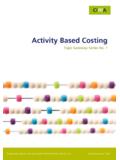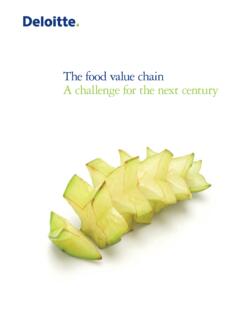Transcription of Stitch Types – Classification and Terminology
1 Stitch Types Classification and Terminology What is a Stitch ? One unit of confirmation of thread resulting from repeatedly passing a strand or strands or loops of thread into or through a material is called as Stitch . Stitch terms Intralooping is passing of a loop of thread through another loop formed by the same thread, example Stitch type 101. Interlooping is passing of a loop of thread through another loop formed by a different thread, example Stitch type 401. Interlacing is passing of a thread over or around another thread or loop of another thread, example Stitch type 301 Stitch Types can be formed Without material Inside material Through material On Material Stitch Types designation Stitch classes are designated and identified by the first digit of a 3 digit numeral system.
2 Types of Stitch within each class are designated and identified by 2nd and 3rd digit. Stitch Types Textile Stitch Types - Classification and Terminology , stitches are catalogued into six classes (as per BS3870/ASTM D-6193/ISO 4915:1991). The International Organization and standardization uses the identical numbering. Class 100 is chain Stitch type, is formed with one or more needle threads introduced from one side of the material only. Property: Chain Stitch is elastic and thicker than lockstitch and can easily be raveled; particular care is required to prevent runback from the last Stitch . Application: Temporary stitching or for Blind stitching Class 200 is hand Stitch type, is formed by single thread passed from one side of the material to the other in successive needle penetrations.
3 Property: a slow process and need huge manpower to finish bulk order. Application: handwork. Class 300 is lock Stitch type, is formed by a needle thread or threads, introduced from one side of the material, interlacing with an under thread supplied from a bobbin on the other side. Property: Low bulk and thin, good strength and abrasion resistance, Poor elasticity, do not ravel. Disadvantage: is limited sewing length, need to replace bobbin thread. Application: Used in seams requiring stretch. Class 400 is multi thread chain Stitch type, is formed with two/more groups of threads having general characteristic of interlacing and interloping of the loops of the two groups.
4 Property: Non ravel, strong, good elasticity, less likely to cause seam pucker due to structural jamming, good seam stretch, does not need to wind bobbin. Disadvantage: Lower resistance to runback and have increased bulk under the seam. Class 500 is over lock or over edge Stitch type, is formed with one or more needles and/or looper threads with at least one thread passing round the edge of the material being sewn. Property: Excellent stretchable good recovery. Application: Seam or edge neatening, suitable for many Types of fabric, subject to fraying or slippage. Class 600 is formed with two or more groups of threads, has for a general characteristic that two groups of thread cover both surfaces of the material.
5 Property: High elasticity, seam neatening and Flat seam Stitch , Bulk, Fast machine speed, No need of Bobbin. Disadvantage: Greater thread consumption. Application: Covering stitches for decorative purpose, Can be used to join two raw edges, Suitable for knitted garments Combination of Stitch type Combination is formed when two or more rows of stitches of different classes are formed simultaneously in one operation. These are denoted by using two individual Stitch type designations, joined with a dot for example Property: Advantages: Save time, labor, cost. Disadvantage more investment Stitch quality is measured with Stitch size ( Stitch length, width, and depth), tension, sequence, elongation, elasticity, resilience, fabric distortion, yarn severance, abrasive strength Stitch Types Classification and Terminology Stitch Types Classification and Terminology





